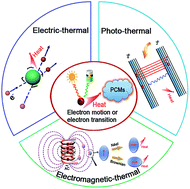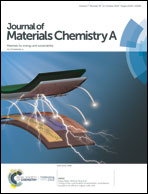Phase change materials for electron-triggered energy conversion and storage: a review
Abstract
Phase change heat storage has the advantages of high energy storage density and small temperature change by utilizing the phase transition characteristics of phase change materials (PCMs). It is an effective way to improve the efficiency of heat energy utilization and heat energy management. In particular, new PCMs with energy conversion functions can effectively realize energy conversion and storage. In recent years, energy conversion PCMs have played an important role in energy utilization and attracted great attention. In this review, we reported the recent progress in different energy conversion PCMs, including electric-thermal PCMs, electromagnetic-thermal conversion PCMs, photo-thermal conversion PCMs, and photo-thermal conversion PCMs in solar thermoelectric generation. The core of the abovementioned conversions lies in the heat release caused by electron motion or electron transition. This process involved triggering energy conversion at the electronic level. Therefore, herein, we aimed to comprehensively review the current development and performances of the abovementioned energy conversion PCMs, summarize the electron-triggered energy conversion mechanism, and suggest directions for further improvement.

- This article is part of the themed collection: Recent Review Articles


 Please wait while we load your content...
Please wait while we load your content...